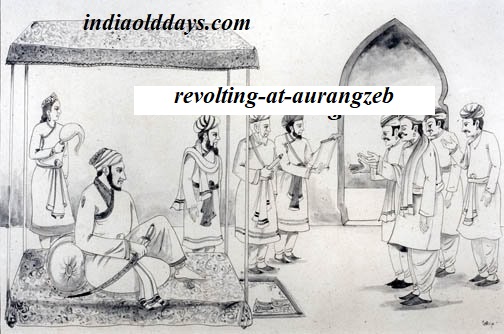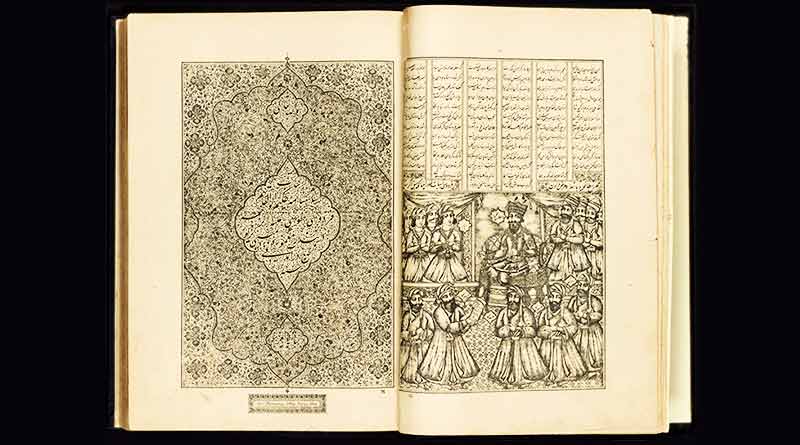Revolting at Aurangzeb
Other Important Facts –
- Rajput policy of Aurangzeb
- Aurangzeb’s religious policy
- What was the history of Aurangzeb?Marathas Conflict and Deccan Policy
- Important Facts About Sikh Gurus
jats rebellion-
The first organized revolt against Aurangzeb was done by Jats settled in Agra and Delhi area. The backbone of this rebellion was mostly peasants and tenants, but the leadership was mainly done by the jurists.
Jat rebellion started with economic reasons, this revolt was supported by the Satumani movement.
1669 AD In Jats of Mathura region, under the leadership of a local landowner Gokula, the first Hindu revolt was made. In the Battle of Tilpat, Mughal faujdar Hasan Ali Khan defeated the Jats and killed Gokulas by making them captive.
1685 AD In the leadership of Rajaram, Jats rebelled in the second Jat. This revolt was more organized. In this war, the jats adopted lump-sum policy along with guerrilla attacks.
Rajaram had plundered Akbar’s tomb in Sikandra and removed Akbar’s bones from the tomb and burnt it.
After Rajaram’s death in 1688 AD, his nephew Choraman took over the reins of Jat leadership and rebelled till Aurangzeb’s death. In the end, he established an independent state called Bharatpur near Mathura.
Satnami Uprising –
In 1672, there was a battle between farmers and Mughals at Narnaul near Mathura, which was led by a religious sect named Satnami.
Satnami was mostly peasant, artisan and lower caste people. Because of their faith in the truth and God, they used to call themselves Satnami. They kept their whole body hair muffling. That is why he was also called Mundia.
The beginning of the Satnami revolt was about a quarrel between a Satnami and a Mughal military officer. In order to suppress this rebellion, local Hindu landlords (mostly of Rajputs) had supported the Mughals.
Satnamami was a cult of devoutes. This cult was established in 1657 AD. There was a place called Narnaul. He believed in pure monasticism.
Afghan Rebellion-
In 1667, a Sardar Bhagu of Yusufjai Kabeela (located in the northwestern region), a person claiming to be a descendant of an ancient royal family, rebelled Muhammad by declaring him king and himself as his deputy. This rebellion was suppressed by the Mughals under the leadership of Amir Khan.
1672 AD In Afghanistan, the Afridi leader led by Akmal Khan then raised the flag of revolt. He declared himself a king. He taught Khutbah of his name ad made a coin.
In 1675, Aurangzeb went on his own and unified the Afghan people by establishing power and diplomatic efforts.
The cause of the Afghan rebellion was the purpose of the establishment of a separate Afghan state. This rebellion was given by the religious movement called Roshnai.
Revolt of Bundelas –
The struggle for the first time between the Mughals and the Bundels began in the time of Madhukar Shah.
To take revenge from Dara in the war of succession, Champtray (ruler of Orchha) had cooperated with Aurangzeb, Aurangzeb gave him a Panchahajari Manasab and an honorable pitch. But on some matters, Champataray came in 1661 AD. Revolted against the Mughals. After being defeated, he committed suicide instead of accepting lordship.
After the death of Champtray, his son led a revolt against Chhatrasal Aurangzeb. Although he had done commendable service of Aurangzeb during the Treaty of Purandar and Bijapur Circle.
In 1705 AD, Chhatrasal made a treaty with Aurangzeb. As a result, he was declared Manasab and King of 400.
1707 AD After Aurangzeb’s death, he became an independent ruler of Bundelkhand.
During the Aurangzeb, there was a long struggle between the emigrants of Assam, under the leadership of Mirzumala, the Mughal forces invaded Ahoms and forced them into treaty (1663 AD).
1671 AD In Ahomon, they again took away their territory from the Mughals.
Shahjada Akbar’s Rebellion-
After getting the assurance of cooperation from Rathors of Mewang and Marwar, Shahjada Akbar declared himself an independent emperor on January 11, 1681.
Shahazada Akbar in 1681 AD In Aurangzeb near Ajmer attacked. Failure to reach Shambhaji, he reached for help, but due to the arrival of Aurangzeb, he fled to Persia and died there.
Repression of the Portuguese-
1686 AD Aurangzeb defeated the British in Hoogly and threw them out.
Sikh Rebellion-
The Sikhs were the last to rebel against Aurangzeb. This was the only rebellion of Aurangzeb’s period that was due to religious reasons.
The rebellion of Sikhs against Aurangzeb directly began in 1675 AD after the execution of Guru Teg Bahadur.
After the death of Guru Tegh Bahadur, Guru Govind Singh has consistently opposed Aurangzeb’s fanatic policies. He made his headquarter in Makhowal or Anandpur.
Guru Gobind Singh had abolished the guru’s throne before his death. And succeeded in making Sikhs a fanatic community.
Guru Gobind Singh compiled the Purak granth, which is named after the book of Tenth Emperor.
After the death of Aurangzeb, his son Bahadur Shah I asked Guru Gobind Singh against his brothers for help on the throne. Due to which they went south and there, on the banks of Godavari river, an Afghan stabbed and injured at a place called Nadir.
After two months, he knew his end time closely and told his body on 7th of October, 1708 AD. To chita.
1704 AD In Guru Govind Singh sent Aurangzeb – Zafarnama.
Thus, the fanatic and impartial whole policy of Aurangzeb transformed a religious denomination of Sikhs into a garrison and military sect.
Saif Khan, the old administrator of Kashmir, is remembered as the builder of bridges.
Thus, suppressing against his insolent full policies and suppressing the Deccan states and Marathas, on 3 March 1707 AD. Aurangzeb had a tragic death near Ahmednagar.
The body of Aurangzeb is 4 km from Daulatabad. Burying in the premises of the tomb of Fakir Burhanuddin (Sheikh Jain-ul-Haq)
Reference : https://www.indiaolddays.com/





